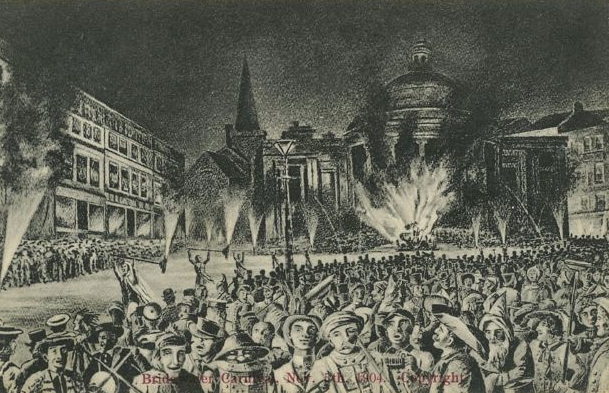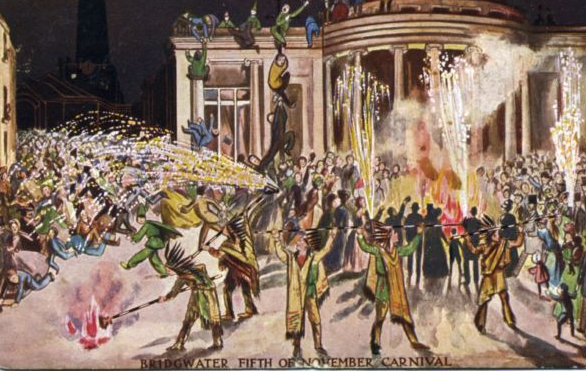An Introduction
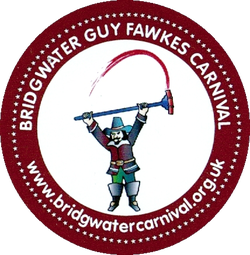
The Somerset County Guy Fawkes Carnival is an annual celebration featuring a parade of large illuminated floats (or carts), which are driven through various towns in Somerset. The parade always starts in Bridgwater but will also travel to North Petherton, Burnham-on-Sea, Glastonbury, Wells Shepton Mallet and Weston-super-Mare. The series of parades in each town now form a major regional festival.
Traditionally, the Carnival began on the first Thursday of November. Since 2001, the procession was moved to the first Friday of the month. In 2012, Bridgwater Carnival will begin on the first Saturday for the foreseeable future.
The Carnival's purpose is to raise money for local charities from money collection carts in the procession. Between 2003 and 2007, around £115,000 was raised at Bridgwater Carnival. In 2010, the Heritage Lottery Fund awarded the Carnival in Somerset Promotion Project £41,000 to promote and conserve Carnival heritage. In 2011, the collection totalled £27,000. This is less than £1 donation per spectator. If every person watching the carnival donated £1 to the collection this would help secure the future of carnival for generations to come.
Traditionally, the Carnival began on the first Thursday of November. Since 2001, the procession was moved to the first Friday of the month. In 2012, Bridgwater Carnival will begin on the first Saturday for the foreseeable future.
The Carnival's purpose is to raise money for local charities from money collection carts in the procession. Between 2003 and 2007, around £115,000 was raised at Bridgwater Carnival. In 2010, the Heritage Lottery Fund awarded the Carnival in Somerset Promotion Project £41,000 to promote and conserve Carnival heritage. In 2011, the collection totalled £27,000. This is less than £1 donation per spectator. If every person watching the carnival donated £1 to the collection this would help secure the future of carnival for generations to come.
Bridgwater CarnivalThe timing of the Carnival is close to the British celebration of Bonfire night on 5 November is no coincidence, as the roots of the original carnival in Bridgwater date back to 1605.
The original Bridgwater celebrations consisted of a large bonfire at the Cornhill. Built out of a large wooden boat, around one hundred tar barrels were added, together with just about anything else available which could be burned. This tradition was stopped due to lack of old wooden boats to burn and because a number of good boats were thrown onto the fire. Effigies or "guys" representing the gunpowder plot instigators were added to the fire by local groups of people known as gangs. It would seem it was these gangs who started the trend towards a procession, as they paraded their guys towards the bonfire. As years passed by, the tradition was continued and the annual celebration became more and more elaborate, involving costumes and music, until the key feature of the event was a large carnival procession. The local people who dressed up and took part in the event were known as Masqueraders or Features - terms still used today to describe the parade participants. There were no parades during the Second World War, but a local carnival enthusiast William Henry Edwin Lockyer also known as "Nosey" walked the carnival route for six years with a group known as The Kilties, to keep the tradition alive. |
Bridgwater Squibbing
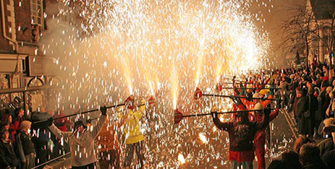
In addition to the carnival procession, the tradition of "squibbing" still occurs afterwards. A squib is a type of large firework on the end of a long wooden handle called a "cosh". It is held aloft by a person known as a "squibber". 100 squibbers stand in line in the town centre making an impressive sight for visitors.
Originally, the squibs were made especially for the carnival and were known as the Bridgwater Squib, and culminated with a large bang as each squib extinguished. With modern Health and Safety concerns it has become difficult to purchase such squibs, and owing to the rising cost of insurance the present-day squibs have no bang.
Originally, the squibs were made especially for the carnival and were known as the Bridgwater Squib, and culminated with a large bang as each squib extinguished. With modern Health and Safety concerns it has become difficult to purchase such squibs, and owing to the rising cost of insurance the present-day squibs have no bang.
Modern Times
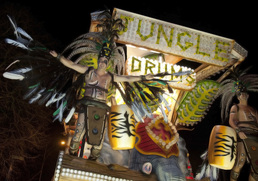
The Bridgwater Carnival was first modernised in 1881 and was originally lit by lamps; electric lights were introduced in 1913. Bridgwater Carnival now consists of a display of over one hundred large vehicles up to 100 feet (30 m) long, festooned with people in costume (static or dancing) and up to 22,000 lightbulbs. The parade follows a 2.5-mile (4 km) route over two to three hours.
Bridgwater now attracts around 150,000 people from all over the UK. Parking from the M5 is sign posted and is managed by the committee in association with Avon and Somerset Police. Public access grandstands were introduced in the mid-1990s, which have increased in popularity over recent years.
Bridgwater now attracts around 150,000 people from all over the UK. Parking from the M5 is sign posted and is managed by the committee in association with Avon and Somerset Police. Public access grandstands were introduced in the mid-1990s, which have increased in popularity over recent years.
Carnival Carts/Floats
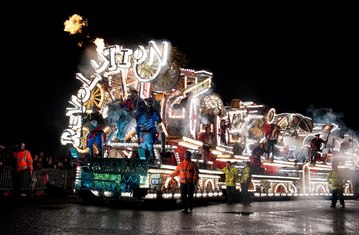
Uniquely in the West Country, the vehicles are called Carts. Unlike other Carnivals where the term Carnival Float is used. The term cart is still used today to describe the large and elaborate trailers used in the procession. Carts are built by local clubs of individuals funded totally by charitable donations and sponsorship from local businesses. Carts are always themed, with no restriction on the theme from the organising committee. Carts include both music and costumed people to complete their theme. People and items on the cart can either be moving or static in tableau.
Today these carts are driven by farm tractors and usually also tow a large diesel-driven electricity generator to provide the amount of power required to power the carts. The tractors themselves are often decorated to match the rest of the cart and generator, and in some cases modified so that the driver is positioned low down between the two front wheels. This allows for a higher degree of decoration without obscuring the driver's view. The length of the entire cart is often built to the maximum allowable of 100 feet (30 m).
These floats are interspersed with walking exhibits, either groups or singles, occasional marching bands, majorette troupes and charity collectors who take donations from spectators. Some carts cost in excess of £20,000 to build and are the result of thousands of hours work throughout the year for the members of each Club.
Today these carts are driven by farm tractors and usually also tow a large diesel-driven electricity generator to provide the amount of power required to power the carts. The tractors themselves are often decorated to match the rest of the cart and generator, and in some cases modified so that the driver is positioned low down between the two front wheels. This allows for a higher degree of decoration without obscuring the driver's view. The length of the entire cart is often built to the maximum allowable of 100 feet (30 m).
These floats are interspersed with walking exhibits, either groups or singles, occasional marching bands, majorette troupes and charity collectors who take donations from spectators. Some carts cost in excess of £20,000 to build and are the result of thousands of hours work throughout the year for the members of each Club.
Carnival Concerts
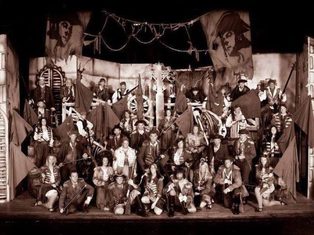
Carnival Concerts will commence October and run for two weeks. They start at 7pm on weekday nights and 6pm at weekends, the show lasts approximately 3 hours.
The Carnival Concerts act as a great warm up for the clubs for their dance routines and choreography before the main Carnival event and runs for 12 nights. The Concert is itself a great spectacle, each night always sells out and has a prestigious local following. Between each act from the 13 carnival clubs and 2 dance troupes that participate "front of curtain" acts fill the time with music, singing and magic tricks to entertain the audience.
Concert tickets can be purchased here.
The Carnival Concerts act as a great warm up for the clubs for their dance routines and choreography before the main Carnival event and runs for 12 nights. The Concert is itself a great spectacle, each night always sells out and has a prestigious local following. Between each act from the 13 carnival clubs and 2 dance troupes that participate "front of curtain" acts fill the time with music, singing and magic tricks to entertain the audience.
Concert tickets can be purchased here.
Information collected from Wikipedia & Bridgwater Carnival.

